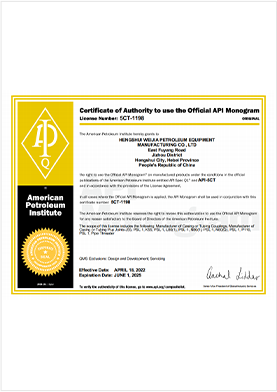- Afrikaans
- Albanian
- Amharic
- Arabic
- Armenian
- Azerbaijani
- Basque
- Belarusian
- Bengali
- Bosnian
- Bulgarian
- Catalan
- Cebuano
- Corsican
- Croatian
- Czech
- Danish
- Dutch
- English
- Esperanto
- Estonian
- Finnish
- French
- Frisian
- Galician
- Georgian
- German
- Greek
- Gujarati
- Haitian Creole
- hausa
- hawaiian
- Hebrew
- Hindi
- Miao
- Hungarian
- Icelandic
- igbo
- Indonesian
- irish
- Italian
- Japanese
- Javanese
- Kannada
- kazakh
- Khmer
- Rwandese
- Korean
- Kurdish
- Kyrgyz
- Lao
- Latin
- Latvian
- Lithuanian
- Luxembourgish
- Macedonian
- Malgashi
- Malay
- Malayalam
- Maltese
- Maori
- Marathi
- Mongolian
- Myanmar
- Nepali
- Norwegian
- Norwegian
- Occitan
- Pashto
- Persian
- Polish
- Portuguese
- Punjabi
- Romanian
- Russian
- Samoan
- Scottish Gaelic
- Serbian
- Sesotho
- Shona
- Sindhi
- Sinhala
- Slovak
- Slovenian
- Somali
- Spanish
- Sundanese
- Swahili
- Swedish
- Tagalog
- Tajik
- Tamil
- Tatar
- Telugu
- Thai
- Turkish
- Turkmen
- Ukrainian
- Urdu
- Uighur
- Uzbek
- Vietnamese
- Welsh
- Bantu
- Yiddish
- Yoruba
- Zulu
Understanding the Role of Casing Pup Joints in Oil and Gas Operations
Understanding Casing Pup Joints A Critical Component in Oil and Gas Operations
In the world of oil and gas drilling, various components play crucial roles in ensuring the efficiency and safety of operations. Among these components, casing pup joints are particularly significant—often underestimated yet critical for successful drilling and well completion. In this article, we will delve into the function, importance, and applications of casing pup joints in the energy sector.
What are Casing Pup Joints?
Casing pup joints are short sections of pipe that are used to connect larger sections of casing in oil and gas wells. Typically ranging from 2 to 20 feet in length, pup joints are an essential part of the casing string, enabling operators to achieve the correct alignment and length necessary to accommodate various geological formations as well as to adjust for any anticipated changes in downhole conditions. These joints can be manufactured to meet specific requirements requested by the drilling project, making them highly customizable.
Function and Importance
The primary function of casing pup joints is to facilitate the proper installation of casing in a wellbore
. The casing itself serves several vital purposes it supports the well structurally, prevents the collapse of the wellbore, isolates different zones within the reservoir, and protects groundwater from contamination. Pup joints help maintain the integrity of this casing by allowing for flexibility in the casing string, which is particularly important in wells that traverse varying geological formations.Moreover, pup joints are designed to withstand extreme pressures and temperatures encountered during drilling. Their robust construction ensures that they can handle the stresses imposed on them, thereby contributing to the overall durability and longevity of the well. The proper use of pup joints can mitigate risks associated with casing failures, which could lead to costly repairs, reduced production, or even environmental harm.
casing pup joint

Applications in Drilling Operations
Casing pup joints find extensive application in various phases of drilling operations. Whether drilling in offshore environments or on land, these joints are indispensable. In situations where precise adjustments to the casing length are required, pup joints provide the necessary flexibility. For example, during well-completion activities, operators may encounter unforeseen geological complications that necessitate slight modifications to the casing design. Pup joints allow for such adjustments without having to replace entire sections of casing, saving time and resources.
Furthermore, pup joints are essential during the cementing process. Proper cementing is crucial for ensuring that the casing is securely and effectively fixed in place. Casing pup joints can help adjust the height of the casing string, thereby optimizing the cement placement around the casing, which is vital for achieving good zonal isolation.
Manufacturing and Standards
The production of casing pup joints involves strict adherence to industry standards. They are typically made from high-strength carbon steel or alloys that can withstand high temperatures and corrosive environments. Various standards, such as those set by the American Petroleum Institute (API), govern the manufacturing process to ensure that these joints meet safety and performance criteria. This level of regulation ensures that operators can rely on pup joints to perform effectively under a range of operational conditions.
Conclusion
In summary, casing pup joints may seem like a simple component within the broader landscape of oil and gas drilling, but their significance cannot be understated. They provide the necessary adjustments for proper casing alignment, support the integrity of the entire well structure, and enhance the safety and efficiency of drilling operations. As the industry continues to evolve, the importance of reliable, high-quality casing pup joints will remain a cornerstone of successful oil and gas extraction. Understanding their role, applications, and specifications helps drilling engineers and operators to design more effective and safe well constructions, ultimately contributing to the sustainable development of energy resources.
-
Tubing coupling plays a significant role in the chemical industryNewsApr.03,2025
-
The Importance of Tubing Crossover in Various Industrial FieldsNewsApr.03,2025
-
The characteristics and important role of Tubing Pup JointNewsApr.03,2025
-
Characteristics and functions of Pup jointNewsApr.03,2025
-
Characteristics and Functions of Pup Joint PipeNewsApr.03,2025
-
Application of Coupling Casing in Various ScenariosNewsApr.03,2025







